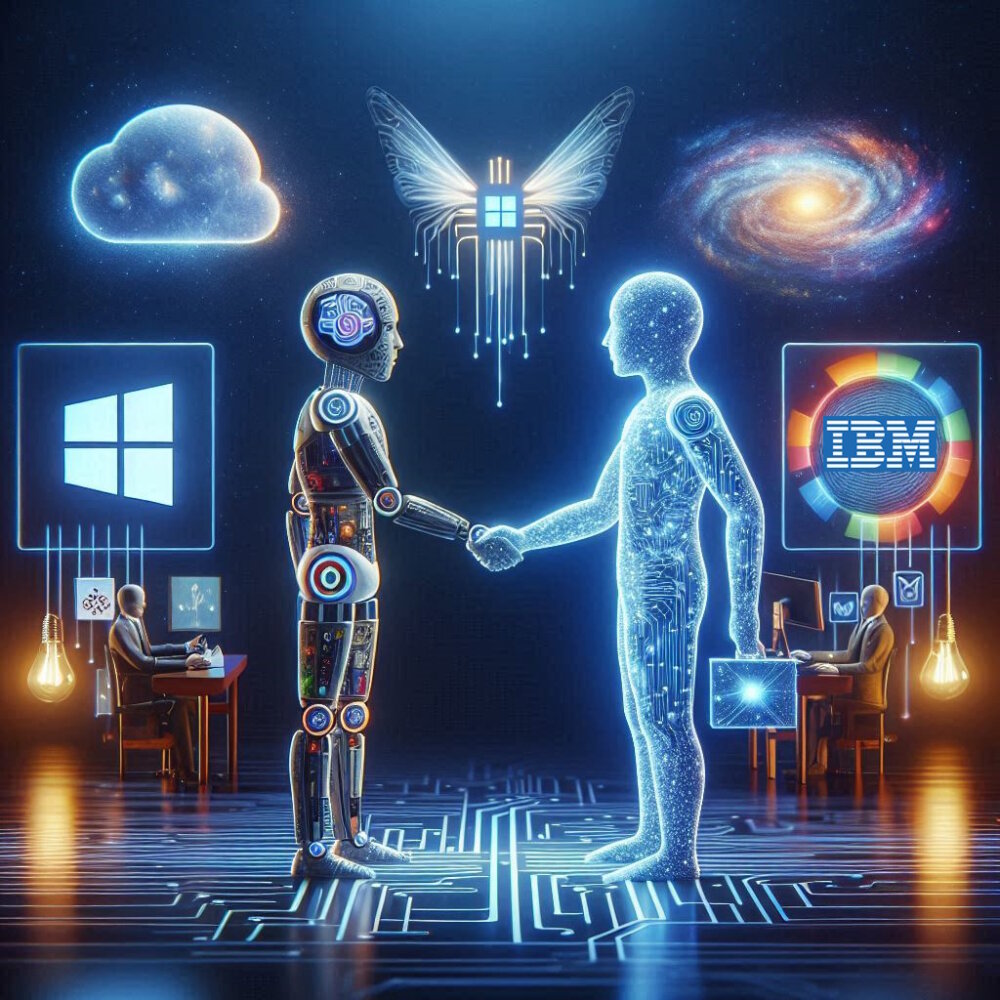
ChatGPT or Scarlett Johansson: how real is Her?
TechFinitive x FlashForward is our exclusive newsletter. Every fortnight, we pick a technology featured in a classic movie and fast forward to where it’s at today. Subscribe to it on Substack so that you’re notified every time a new edition goes out. This edition was originally published on the 25th of November.
Flashback: Theodore, a lonely man in a bland future, falls in love with his new operating system: a fast-learning artificial intelligence called Samantha, who speaks with the sultry voice of Scarlett Johansson.
Flashforward to today: On the tenth anniversary of its release in December 2003, Her is extremely relevant. The movie asks questions which are perfectly timed for the arrival of OpenAI’s ChatGPT and other generative systems, which brought a game-changing but highly controversial new phase of AI into the mainstream.
Watching writer and director Spike Jonze’s movie today, it’s notable that the AI OS Samantha constantly asks questions. If you’ve become familiar with AI in the past year, you’ll recognise these questions as a subtle form of machine learning. Samantha’s probing is disguised as a natural human-like conversation to elicit information from Theodore about himself, his feelings and behaviour.
Voice control is ubiquitous in the world of Her, with Joaquin Phoenix’s main character Theodore dictating letters that are then printed in a person’s own handwriting. While he carries a small folding phone – another recent trend – most of the interaction between humans and computers is through voice control. That’s pretty well-established in the real world with voice assistants like Apple’s Siri and Amazon’s Alexa, which speak with a neutral tone. What we haven’t achieved yet is the emotion in the computer’s voice.
In Her, computers change their voice depending on context. The OS sounds worried as it reads work emails, or upbeat when trying to rouse Theodore out of bed.
Today, there are startups working on software that can respond with emotion (or a facsimile of feeling). One company, Emoshape, has its roots in a system which read out stock market information with an excited voice as trades increased, so bankers could “feel” the market.
Reading out specific information like emails or stocks in a preset voice is one thing. Recognising and responding to human emotion is exponentially harder.
The first thing an AI would have to do is recognise the emotion. Charles Darwin believed we express feelings in certain universal ways – smiling when happy, frowning when sad – but that’s a gross simplification, and not even true in different cultures. So computers can scan facial expressions, but can only make educated guesses about what those expressions mean. There’s no way that a machine could be as intuitive as Samatha, which recognises Theodore’s hesitance and loneliness.
Theodore is clearly helped by having someone to talk to. And there’s a conversation about whether AI tools like Wysa, Eleos and Lyssn can help people in the field of psychology. Generative AI chatbots are too prone to bias and inaccuracy to be trusted in conversing with patients, but Wysa can respond with statements written by human therapists. AI can analyse conversations and notes for patterns. And where psychologists currently have to rely on patients self-reporting their feelings and behaviour, AI could analyse data like social media use, physical movement and what they’re spending money on. This data gives a fuller picture of a person’s activity in between sessions.
Interlude for a fun fact
Three years before Her, Spike Jonze made a short film called I’m Here about two robots falling in love. As with Her, it’s a meditation on human relationships given a technological twist, as a lonely robot (played by Andrew Garfield) gives more and more of its mechanical body to another.
But the evolution of natural language highlights the core problem with ever more human-seeming AI. In 2018, Google did a demo in which its Duplex AI system phoned a restaurant to make a reservation. The demo incorporated speech disfluencies – human-like “um”s and “uh”s. Which is effectively a deception, tricking the person on the other end of the line into thinking they’re talking to a person.
A big question at the heart of Her is whether Theodore and Samantha are really in love. Some of his friends accept the relationship, but his ex-wife challenges his abilities to deal with the messiness of a human relationship. Theodore’s love feels real to him, but the uncomfortable question is how and why the AI feeds and reinforces the feeling. The people behind the real-life chatbot Replika removed its ability to have romantic conversations after users formed emotional attachments. And in another infamous incident, a Bing chatbot insisted it was in love with a journalist and pushed him to leave his wife – clearly a dangerous thing for a computer to say to anyone vulnerable.
In a later scene, the OSes band together to create an artificial version of philosopher Alan Watts (voiced by Succession’s Brian Cox). AI recreations of real people, living or dead, are among the most controversial uses of the technology. Highly realistic deepfakes are the next generation of fake news, revenge porn or criminal scams. A big bone of contention in the recent Hollywood actors’ strike was movie studios claiming the right to digitally recreate an actor or extra, potentially exploiting a human’s likeness without consent or compensation. Despite Hollywood’s writers and actors successfully pushing back against studios on AI, the genie is out of the bottle. We’ve already seen computer-generated versions of iconic actors in Star Wars movies, while pop stars like Grimes and Demi Lovato have cloned their voices to be used in AI-generated songs.
An AI-powered recreation of a dead person is literally the start of a Black Mirror episode: 2013’s Be Right Back, in which a grieving woman buys a robot replica of her late husband. But that hasn’t stopped people from using AI to create lifelike digital versions of dead people. Services like StoryFile and HereAfter AI record a person speaking, then use generative AI to allow friends and family to interact with a digital avatar of the deceased. StoryFile made headlines by presenting a woman speaking at her own funeral. Meanwhile, when the folks at a company called AE Studio aren’t busy making a beer called AIPA (AI + IPA, geddit?), they’ve created a tool for short conversations with a chatbot based on information you provide about a lost loved one. Is “grief tech” a profound tool for finding closure? Or an obscene interruption to the natural and necessary grieving process?
In Her, the virtual spectre is a well-known thinker. Alan Watts was one of the first to bring Eastern philosophy to a Western audience and talked about how individuals feel alienated and isolated when they lose their connection with nature and the present moment. We’ll never know what he would have thought about the possibility of being recreated in this fashion, but we can probably guess.
Watts left 25 books plus countless articles and lectures. That gives machine learning systems a lot of his thoughts to draw upon. For anyone seeking to understand a philosopher’s complex ideas, a natural language conversation with a generative AI system trained on those ideas would be a pretty accessible way in. But that digital facsimile wouldn’t make new philosophical or intuitive leaps. It could only parrot words or sentences. And AI’s tendency to bias and inaccuracy could potentially skew or misrepresent the underlying ideas.
Will it sell?
Personal data has emerged as one of the twenty-first century’s most valuable assets. We already know artificial intelligence is particularly good at processing and analysing vast quantities of data, but Her also shows how AI’s relatively newfound ability to use natural language can lull people into revealing more about themselves. Having seen how much information people are willing to hand over to social media and tech companies, companies are surely salivating at the prospect of a soft-voiced interrogator tricking us into confiding in it as if it were a close friend.
The WALL-E Award for Not Murdering Anyone
Unusually for a sci-fi movie, Her’s OSes are pretty nice to humans. Unlike 2001: A Space Odyssey’s HAL, Terminator’s Skynet and countless other murderous fictional computers, Samantha and her OS chums simply leave the human race to our own devices as the AI takes off to explore the cosmos.
ChatGPT is a long way from achieving consciousness akin to humanity. However, noted computer science expert Professor Stuart Russell of UC Berkeley says that sentience is “irrelevant”, warning instead of the potential dangers of AI developing goals which we don’t understand and can’t control. In March this year, he joined well-known names like Elon Musk, Apple co-founder Steve Wozniak and Turing Award-winner Yoshua Bengio in calling for a pause to AI development and government regulation of this potentially civilisation-ending technology.
As yet, we can’t even fully define sentience, let alone predict when it will happen. John McCarthy, one of the scientists who coined the term ‘artificial intelligence’, said he thought high-level machine intelligence would come along “between five and five hundred years from now.”
Verdict
Her is an unusually non-judgemental take on technology. Unlike most dystopian techno-thrillers, Her leaves it up to you to think about your relationship with technology and how it connects you with yourself and others or comes between you. The AI doesn’t kill anyone, and in some ways helps the main character work through his emotions. But it does shine a light on the questions and concerns about artificial intelligence that need to be considered as we barrel headlong into an AI-powered future.
Not just some links.
ChatGPT plays doctor: what happened when a real NHS doctor asked the AI for medical advice
Generative AI is talking, but is anyone actually listening?
AI is changing every aspect of psychology
How AI avatars of the deceased could transform the way we grieve
NEXT UP

Alexey Kalachik, CEO & Co-Founder at Fively: “The potential for digitalisation within insurance is enormous”
We interview serial entrepreneur Alexey Kalachik, CEO & Co-Founder at Fively, on the future of fintech and what makes this space so exciting for startups.

IBM bolsters AI push with Microsoft Copilot launch
In a bid to boost its AI offering, IBM Consulting will enable enterprises to create and manage AI copilots – including Copilot for Microsoft 365

Andrew Kay, Director of Systems Engineering APJ at Illumio: “The most worrying development with ransomware is that it has evolved from simply stealing data to impacting IT availability”
Andrew Kay, Director of Systems Engineering APJ at Illumio, has 20 years’ experience helping organisations strengthen their cyber resilience. We interview him as part of our Threats series on cybersecurity.
